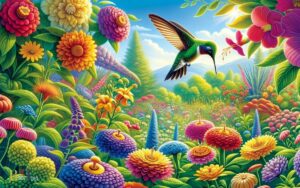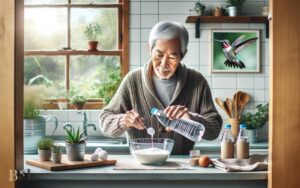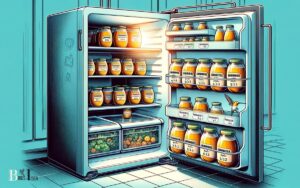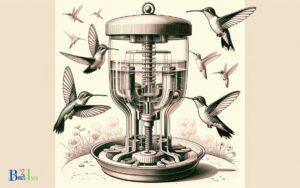Make Hummingbird Food Without Boiling: Learn How To Make!
Learn how to make hummingbird food without boiling water with this easy guide. Use simple ingredients to create a safe and nutritious nectar that hummingbirds will love.
Preparing hummingbird food without boiling is straightforward and can be done using two primary ingredients:
- Granulated sugar
- Tap or spring water
To make the nectar:
This method is safe for hummingbirds and eliminates the need to boil water, making it a quick and convenient option for bird enthusiasts.
Attract hummingbirds with ease by providing fresh, homemade nectar using this simple, no-boil recipe.
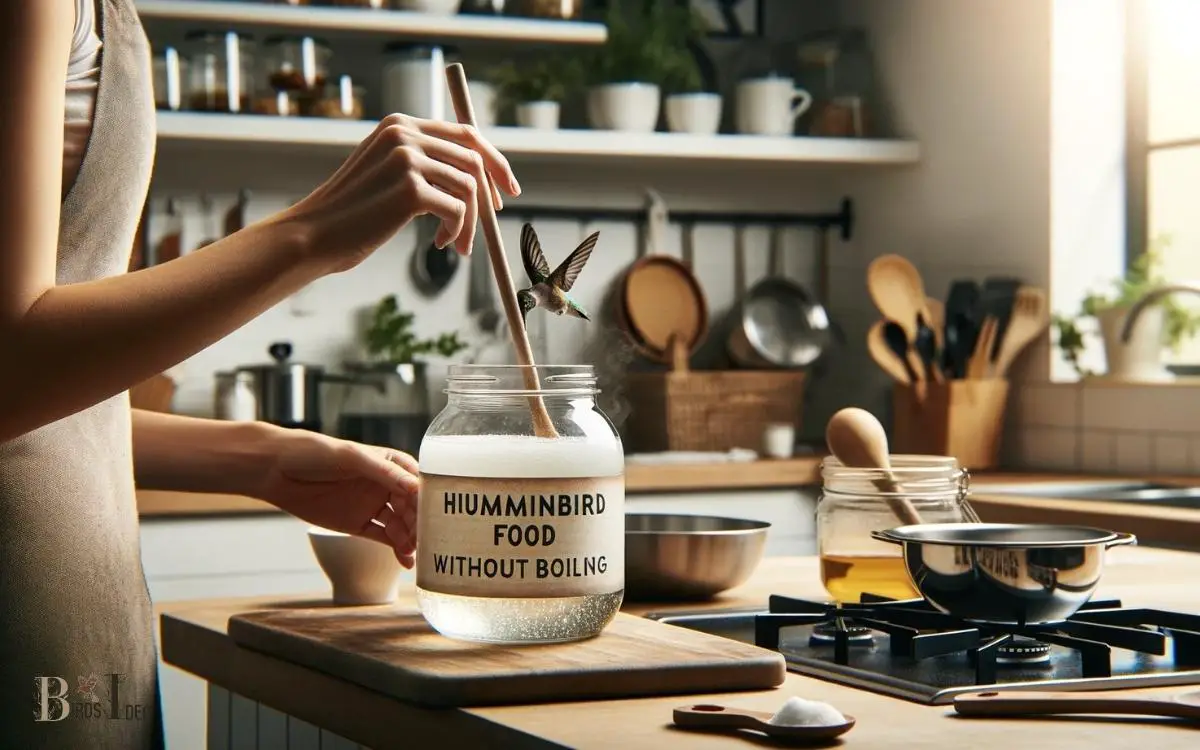
Key Takeaway
Why Boiling Isn’t Necessary?
Boiling isn’t necessary when making hummingbird food because the sugar will dissolve adequately in room temperature water.
Hummingbirds are attracted to the sweetness of the nectar, and it’s important to provide them with a safe and healthy source of food.
By using room temperature water, you can easily dissolve the sugar without the need for boiling, which can save time and energy.
Additionally, boiling the water can potentially alter the sugar concentration, leading to an unbalanced and potentially harmful solution for the hummingbirds.
Therefore, by skipping the boiling process, you can ensure that the hummingbird food is prepared efficiently and effectively, ultimately serving these delightful creatures with the best possible nourishment.
The Basic Ingredients You’ll Need
The basic ingredients you’ll need for making hummingbird food consist of only sugar and water.
When preparing this simple and effective solution, it’s important to use the right proportions and techniques to ensure the well-being of these delightful birds.
Here are the essential ingredients for making hummingbird food:
- Granulated Sugar: This common household ingredient is the primary source of energy for hummingbirds and should be used in a specific ratio to water.
- Water: It’s crucial to use clean, fresh water to create the nectar for hummingbirds. Tap water is suitable as long as it’s free from any contaminants.
- Measuring Utensils: Accurate measurements are key to creating a safe and balanced hummingbird food solution. A measuring cup and spoon will help you achieve the correct sugar-to-water ratio.
Mixing the Nectar Solution
Mixing the nectar solution requires carefully measuring the granulated sugar and water to achieve the proper ratio for hummingbird food.
- Start by using a one-to-four ratio of sugar to water, such as 1 cup of granulated sugar to 4 cups of water.
- This ratio closely resembles the sucrose concentration found in natural flower nectar. To mix, simply combine the sugar and water in a clean container.
- Stir the solution until the sugar is completely dissolved. It’s important to ensure that the sugar is fully dissolved to prevent the growth of mold.
- Once mixed, the nectar solution can be stored in the refrigerator for up to two weeks.
By following these steps, you can provide a safe and nourishing source of food for the hummingbirds in your area.
Potential Risks and Precautions
Hummingbird food should always be prepared with a clean and sanitized feeder to minimize the risk of contamination.
When making hummingbird food without boiling, it’s essential to consider potential risks and take precautions to ensure the health and safety of these delicate birds.
Here are some important points to keep in mind:
- Regular Cleaning: Clean the feeder thoroughly with hot water and mild soap at least every few days to prevent the growth of harmful bacteria.
- Avoiding Mold: Regularly inspect the feeder for any signs of mold, and if present, clean it immediately to prevent harm to the hummingbirds.
- Quality Ingredients: Use high-quality sugar and ensure that the sugar-water solution is fresh to provide the best nutrition and reduce the risk of spoilage.
Factors to Consider When Choosing the Right Feeder
When selecting a feeder for hummingbirds, consider the size and design to accommodate their unique feeding habits.
The feeder’s placement should prioritize visibility from various angles to attract these tiny, fast-moving birds.
These two factors play a crucial role in creating an inviting environment for hummingbirds to feed.
Feeder Size and Design
Selecting an appropriate feeder size and design is essential for attracting and accommodating hummingbirds in your garden.
When choosing the right feeder, consider the following:
- Opt for a feeder with multiple feeding ports to accommodate several hummingbirds at once.
- Look for a feeder with a built-in ant moat to prevent ants from reaching the nectar.
- Consider a feeder with a red color scheme to attract hummingbirds from a distance.
Feeder size and design play a crucial role in providing a welcoming environment for these delightful birds.
By selecting the right feeder, you can ensure that the hummingbirds in your area have a reliable food source and a comfortable feeding experience.
Next, let’s discuss the placement for visibility.
Placement for Visibility
To ensure maximum visibility and accessibility for hummingbirds, the right feeder should be strategically placed in your garden, preferably near flowering plants and away from potential disturbances.
Choose a feeder that is brightly colored, as this will help attract the hummingbirds’ attention. Opt for a feeder with perches, which allows the birds to rest while feeding.
Additionally, consider a feeder with a built-in ant moat to prevent ants from reaching the nectar.
Placing the feeder near flowering plants not only provides a natural food source for the hummingbirds but also makes the feeder more visible and inviting.
Avoid positioning the feeder near high-traffic areas or where pets may disturb the birds. By selecting the appropriate feeder and placing it thoughtfully, you can create an inviting space for hummingbirds to visit.
We will discuss placement and maintenance tips to keep the feeder in optimal condition.
Can I Make Hummingbird Food Without Boiling?
Yes, you can make hummingbird food without boiling. Simply mix one part sugar with four parts water, stir until the sugar dissolves completely, and fill your hummingbird feeder with the solution. Remember to clean the feeder regularly and replace the food every few days to ensure the health and safety of these delightful creatures. Create a welcoming environment for hummingbirds by making their food with ease.
Maintenance Tips
- Regular Cleaning: Clean the hummingbird feeder every 3-4 days, especially in hot weather, to prevent mold and bacterial growth. Use a mild soap solution and a bottle brush to scrub the interior thoroughly.
- Use Vinegar Solution: Periodically soak the feeder in a solution of 1 part white vinegar to 4 parts water. This helps disinfect and remove any mineral deposits. Rinse thoroughly before refilling.
- Avoid Harsh Chemicals: Refrain from using harsh chemicals or bleach, as residue can be harmful to hummingbirds. Stick to natural cleaning solutions to ensure the safety of the birds.
- Inspect for Damage: Regularly check the feeder for any signs of damage or wear. Replace worn-out parts or cracked containers to maintain a safe and functional feeding environment for hummingbirds.
- Refill with Fresh Nectar: Refill the feeder with fresh hummingbird nectar regularly, ideally every 2-3 days, to ensure it doesn’t spoil. Clean the feeding ports and replenish with a solution of 4 parts water to 1 part white granulated sugar. Boil and cool before filling the feeder.
Conclusion
Making hummingbird food without boiling is a simple and effective way to attract these beautiful creatures to your garden.
By using the right ingredients and following proper placement and maintenance tips, you can create a welcoming environment for hummingbirds without the need for boiling.
Keep a close eye on their activity and be mindful of potential risks to ensure a safe and enjoyable experience for both you and the hummingbirds.

